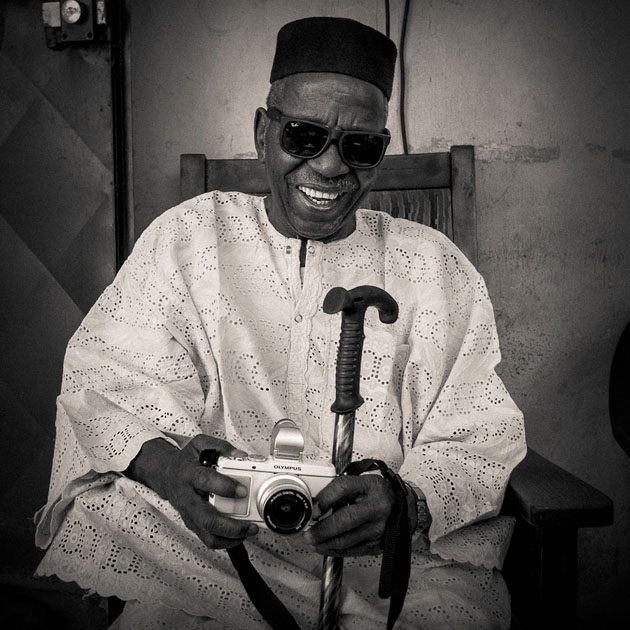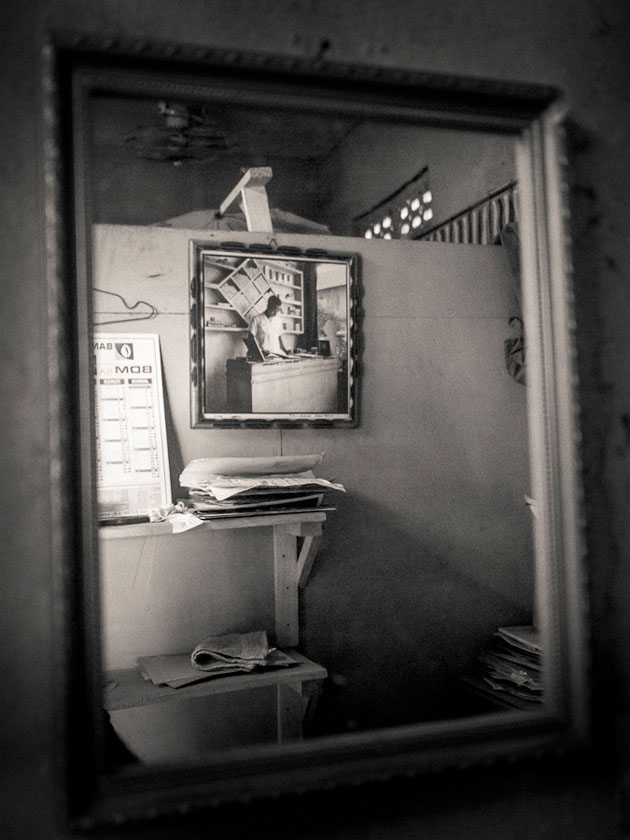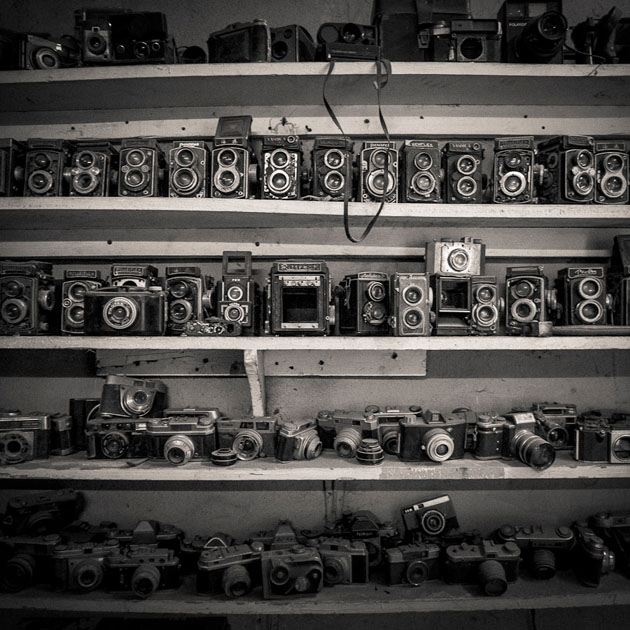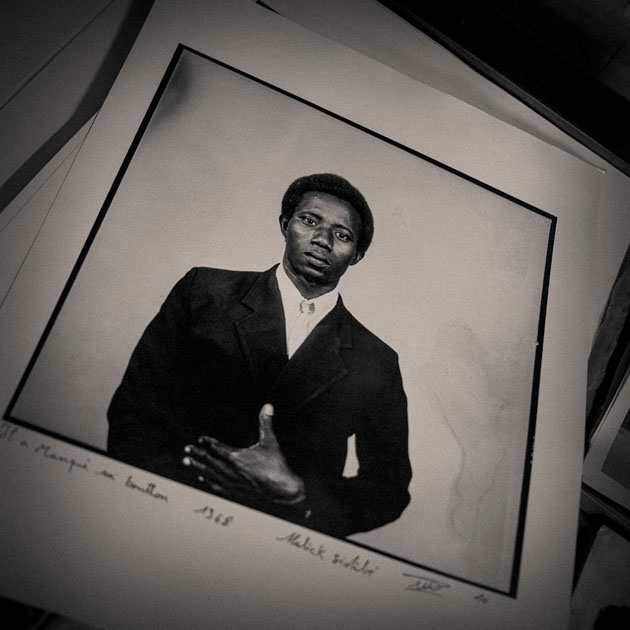The Smiling Eyes – A Portrait of Malick Sidibé
“Venice is beautiful, but it misses energy, while here in Africa you could still feel it. Maybe less than in the past since young people are more lonely today, but they are finding themselves again. My pictures are made of these feelings; joy and youth.”
Malik Sidibé puts off his black glasses, his face lights up and a broad smile full of life rises on it.
I’ve tried to get in contact with him four years ago, when I was in Bamako for work. I would have liked to interview him, but he wasn’t in Mali at that time and afterwards we lost sight of each other. I needed a pretext to go back and to be able to spend some hours with one of the greatest African photographers at work today; the first photographer awarded by Golden Lion at Venice Biennale (2007) with a curriculum vitae full of awards and important exhibitions such as the Hasselblad Award, the solo show at Pinacoteca Gianni and Marella Agnelli in Turin and the one at Cartier Foundation in Paris.

“You see…” he pointed at the shelf with all his cameras aligned in a row, in his small studio located in a dusty street in Bamako. “You see, those are cameras that people brought to me to repair, and then left here because they didn’t have money to pay me or because they got lost.” He disappears for a while and reappears with some stuffed but tidy books of contacts from the 60’s. “What a wonderful period… you danced, and clubs were full of people who wanted to stay together. I went round the clubs and took pictures, which I sold the day after. I put posters outside my studio, people of my city knew me. Film was seen as a serious thing and there were a lot of young Casanovas, who waited in a queue for being shot with girls while dancing”.
André Magnin, Sidibé’s dealer, laughs and says to me “Vittore, that’s the way Malik is, he remains genuine, he never forgot his background and he still has the wonder of childhood, which leads him despite his age.”


Malik answers my questions composedly. I’m amazed of his total lack of influences and his spontaneity, even when he confesses not being interested in some photography that depicts the clichéd Africa, which is used by magazines and foreign photographers. Suddenly he stops talking and says: “That’s enough! Stop talking, it’s time to take pictures”. He asks me my digital camera and he starts shooting. Then he turns on the lights of his studio – made from white painted cans – and among the reflective tools made of old umbrellas, I see a tripod and his Hasselblad.
“I wanted a unique light, soft and diffused, and I change the backcloths once every two or three years. I’m very demanding, so it’s hard to find something that is perfectly suitable for my way of working.”
The sun goes down. A continuous flow of young European photographers drop by looking for a boost from the master and it interrupts our chat. Malik lavishes smiles and good words to everybody, while people point hastily their iPads bombarding him with a lot of images, all too similar to each other.
Then we look at the big black and white prints, his most well known portraits. While turning over the pictures, Malik tells me a story of each subject, person or small village in the middle of nowhere. It would take at least a month to go through them all, but my flight back is the day after. I walk away in the dark of the night, which here at the equator takes you unaware. A touch of melancholy creeps into my chest.


